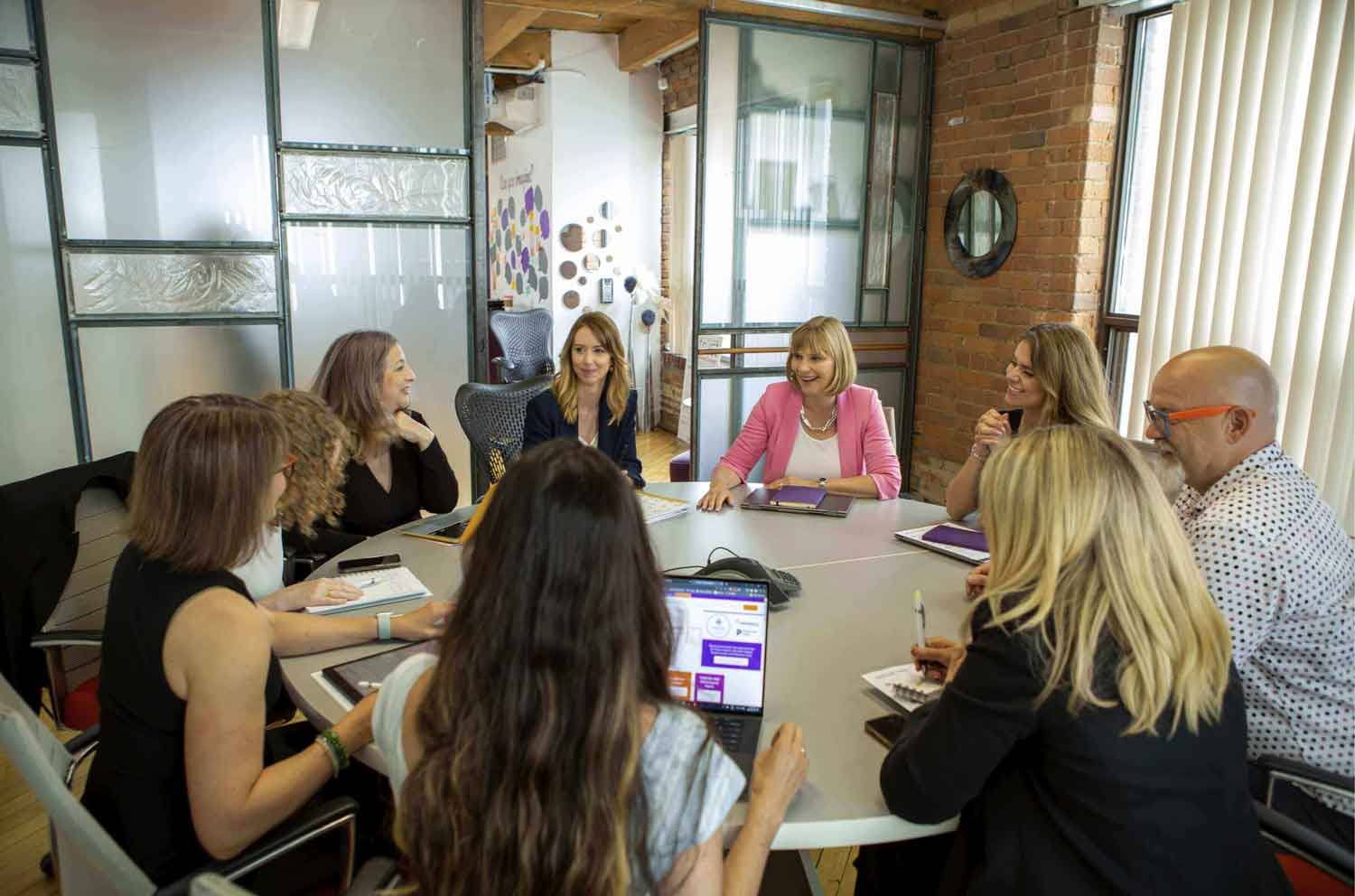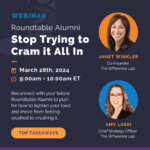Over 10 years ago I got involved in my very first MasterMind group. I’d never been involved in a peer advisory forum before but was so impressed with the process and the results that I started to get obsessed with peer networks. In fact, our name – The Executive Roundtable – came from an image I had of King Arthur and his trusty Knights of the Roundtable. I like to think that just as his Knights had his back, the Executive Roundtable has your back. Anyway, we’ve taken the MasterMind concept and spun it into our own versions through our Roundtable for Leaders program (with a few other ingredients thrown into the mix). But, if you’d like to start your own peer advisory roundtable, here are some suggestions to get you started:
- Choose your group focus: advisory groups come in all shapes and sizes. The key is to decide what the focus is going to be: job hunting, experience exchange, coaching, career transition, business development. Know what you’re all about before you start inviting people to join you.
- Write a statement of purpose: create a one pager that outlines:
- The purpose of your group
- Who should join
- How frequently you’ll meet
- Any costs involved
- Length of time/commitment required
- Start recruiting: Aim to bring in between 5 and 7 people to your group. Smaller groups can be fine too… you’ll be able to spend more time on individual issues. Bigger groups tend to work better when you’re focused on more of an information /education/best practice exchange format. I like 6 to 8 because there’s enough space for everyone to participate and you still get diversity of thinking.
- Use the classic MasterMind meeting format:
- Around the table update
- Challenge/opportunity presentation (everyone shares something they want group input on)
- Peer coaching on selected challenges
Frequency-wise, I suggest between 4 to 6 weeks in the early stages. Any longer and the group can lose momentum. As the group matures, you can change it up as required.
Here are some other tips:
- Chemistry is huge… be careful who you select and make sure everyone has a similar agenda.
- Peer to peer is important… in my experience. But how you define “peer” is different. It could be that you’re all entrepreneurs, or all daycare supervisors or all leaders. As long as there’s some common ground, I think that’s helpful. How much tenure, scope, or experience factors in is really back to the goals of the group.
- Commitment is crucial… the thing that makes peer groups work well is when everyone is equally committed to their success. Sporadic involvement just doesn’t work.
- Facilitation is critical… it may be a peer program but someone has to take the lead on the communication, administration and overall organization of the group sessions etc. If you’re launching a group, you may just be that person. Or, you can rotate amongst other members. Regardless, someone is going to have to “own” the process initially to get it on track.
- Set an end date… I’ve been involved in peer groups from as short as 6 months to as long as 5 years. Initially, I think it’s helpful to set a short time frame to trial the process (say 6 months). After that, you can either continue or disband. Shorter than 6 months and you won’t get into the groove. Longer and it may be a commitment that people aren’t prepared to make until they see the value.
Peer advisory groups have been accessible to CEO’s for years and continue to grow in demand. For those “in the middle”, there’s been a lot less choice out there (which is , frankly, why we launched the Executive Roundtable). I hope this has kicked off your thinking. There are certainly many more things that I could touch on (eg: confidentiality, onboarding new people, how to “vote people off the island” if they’re not working out, etc.). If you’d like more information on how to start your own Peer Roundtable advisory group or have one that’s struggling, give us a call. We’d be happy to give you more tips that can help you get started and we’ll also be launching a “Do It Yourself” Peer Advisory Kit in 2011. So stay tuned!
Happy leading!



